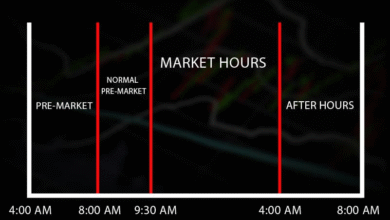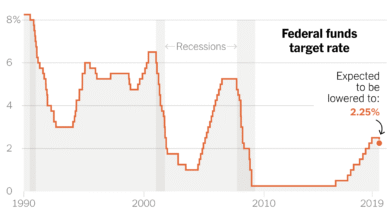Stacks Block Production Resumes Amid Technical Challenges

Stacks Block Production is back on track following a recent hiatus due to technical issues. On May 24, the Stacks team, a Bitcoin Layer 2 solution, announced that they have resolved the complications stemming from the mempool syncing logic of their stacks-node. This update is crucial for maintaining the efficiency and reliability of the Stacks cryptocurrency, as it enables the system to process transactions once more without significant interruptions. While block production has resumed, users are cautioned about potential ‘occasional degradation’ until all miners and signers upgrade to the latest version 3.1.0.0.11. Ensuring smooth operations and addressing blockchain issues promptly demonstrates Stacks’ dedication to creating a robust Layer 2 environment.
In the realm of decentralized finance, the recent resumption of block generation in the Stacks ecosystem marks a significant milestone. The Stacks blockchain, functioning as a Layer 2 solution for Bitcoin, faced temporary setbacks due to syncing discrepancies within its node infrastructure. The team has issued recommendations for immediate node upgrades to enhance operational integrity. As the community transitions away from previous syncing dilemmas, users are reminded of the ongoing need for vigilance regarding potential blockchain performance fluctuations. Ultimately, the Stacks initiative showcases its resilience in overcoming technical challenges while continuously improving its infrastructure.
The Importance of Stacks Block Production in the Cryptocurrency Ecosystem
Stacks block production plays a vital role in enhancing the functionality of the Bitcoin Layer 2 ecosystem. By allowing developers to build decentralized applications using smart contracts, Stacks effectively bridges the gap between the conventional Bitcoin network and the capabilities of modern blockchain solutions. This integration not only elevates user experience but also positions Stacks as a pioneering framework in the cryptocurrency landscape. Ensuring a smooth and uninterrupted block production process is crucial for maintaining trust and reliability among users and developers alike.
Moreover, the importance of stable block production cannot be overstated, especially given the diverse applications being developed on the Stacks network. With more projects being launched, the need for optimal mempool syncing and proper node operation becomes paramount. The implications of any degradation in block production can affect transaction speeds and user satisfaction, highlighting the necessity of regular upgrades like the one announced for version 3.1.0.0.11. As Stacks continues to grow, its ability to maintain efficient block production and resolve blockchain issues will significantly influence its long-term success.
Responding to Blockchain Issues: Stacks’ Latest Node Upgrade
The recent upgrade of Stacks’ nodes to version 3.1.0.0.11 was a necessary measure taken in response to identified blockchain issues that were affecting mempool syncing logic. The misbehaving nodes had begun to impact the overall efficiency of block production, leading to potential downtimes for those relying on the network. By addressing these underlying problems, the Stacks team aims to restore full functionality to node operators and miners while mitigating any further degradation in performance. This proactive approach demonstrates Stacks’ commitment to maintaining a robust blockchain infrastructure.
The communication from Stacks regarding the need for node upgrades was timely and crucial. Informing miners and signers of the potential risks of not upgrading ensures that everyone involved in block production is aligned towards a common goal of stability. Highlighting the historical context of the bug, which dates back to 2020, emphasizes the importance of continuous monitoring and maintenance within the blockchain ecosystem. With these measures in place, Stacks seeks to enhance its node network’s resilience against similar issues in the future, reinforcing its position as a reliable Bitcoin Layer 2 solution.
Navigating Mempool Syncing Challenges in Stacks
Mempool syncing issues have been a recurring challenge in the blockchain industry, affecting transaction speeds and the overall performance of networks. In the case of Stacks, these challenges arose due to the legacy misbehavior in stacks-node logic, which became particularly problematic as network traffic increased. Ensuring efficient mempool syncing is essential as it directly impacts the responsiveness of nodes during block production. As Stacks navigates these technical hurdles, the focus remains on enhancing user experiences and preserving the integrity of transactions within the ecosystem.
To resolve the mempool syncing challenges, the Stacks development team is not only releasing immediate fixes like the recent node upgrade but also engaging in broader discussions about optimizing blockchain performance. By analyzing past incidents and seeking innovative solutions, developers aim to fortify the network against potential disruptions. Sharing findings and updates with the community reinforces trust and transparency, crucial elements in fostering a resilient cryptocurrency environment. Continuous improvement in mempool syncing will be vital as Stacks expands its user base and application developments.
Future Implications of Enhanced Stacks Blockchain Performance
The recent enhancements in Stacks’ blockchain performance, particularly concerning block production and mempool syncing, signify an important step forward for the ecosystem. As more applications are developed and utilized on the platform, the reliability and efficiency of Stacks will directly influence user adoption rates. With the implementation of the latest node upgrade, Stacks is paving the way for a more stable environment that can support increased transaction volumes and complexities that come with a growing network.
Looking ahead, the successful resolution of these issues can lead to further innovations within the Stacks platform. As developers gain confidence in the improved performance, we may see a surge of new projects leveraging the Stacks framework. This not only enhances the overall attractiveness of Stacks as a solution for building decentralized applications but also contributes positively to the broader Bitcoin ecosystem. Continuous focus on optimizing blockchain functionalities remains essential for Stacks to thrive and maintain its position as a leader in the Layer 2 space.
The Role of miners and Signers in Stacks Blockchain Stability
In the Stacks blockchain ecosystem, miners and signers play pivotal roles in ensuring the stability and efficiency of block production. These participants are responsible for verifying transactions and maintaining the integrity of the blockchain. Given the recent issues with mempool syncing that affected block production, it becomes increasingly clear how vital it is for all miners and signers to keep their nodes updated and aligned with the latest protocols. The proactive upgrade to version 3.1.0.0.11 is a reminder of their crucial role in fostering a healthy and robust blockchain environment.
Engagement from miners and signers extends beyond mere updates; their actions directly impact user trust and network performance. When these key stakeholders cooperate to resolve blockchain issues, they collectively contribute to creating a seamless experience for users. By addressing degrading performance and ensuring that all nodes are synchronized, they help safeguard the network against disruptions. The collaboration among miners, signers, and developers is essential for the long-term success and scalability of the Stacks ecosystem.
Enhancing Community Trust Through Transparent Communication
Transparent communication is essential in the cryptocurrency space, particularly when blockchain issues arise. Stacks’ recent announcements regarding block production and mempool syncing problems exemplify the significance of keeping the community informed. By sharing details about the upgrade process and the historical context of issues, the Stacks team strengthens community trust and fosters a sense of unity among users, miners, and developers. Ensuring that the network participants are kept in the loop allows them to make informed decisions regarding their involvement in the ecosystem.
Furthermore, clear communication surrounding technical aspects and potential impacts on transactions helps demystify complex blockchain operations for the average user. As the Stacks team continuously engages with its community through updates and educational content, it encourages wider participation and fosters a sense of ownership among stakeholders. This approach not only enhances trust but also empowers users to better understand the Stacks network, facilitating a more vibrant and interconnected blockchain community moving forward.
Challenges in Maintaining Efficient Blockchain Production
Maintaining efficient blockchain production is an ongoing challenge faced by many Layer 2 solutions, including Stacks. The recent announcement regarding occasional degradation alerts users to potential hiccups that could arise during periods of high network activity. Such challenges can stem from a variety of factors, including node performance, mempool syncing issues, and overall transaction volume. Understanding these complexities is crucial for users who rely on Stacks for their decentralized applications.
In light of these challenges, the Stacks team remains committed to addressing performance issues proactively. By continually analyzing and refining their systems, they aim to minimize disruptions and ensure consistent block production. As the Stacks network expands, developers must stay ahead of potential bottlenecks and complications associated with a larger and more complex ecosystem. By focusing on these challenges, Stacks can enhance its reputation as a reliable Bitcoin Layer 2 solution that prioritizes user experience and system robustness.
Future Directions for the Stacks Ecosystem
As Stacks continues to evolve, its future directions will be shaped by ongoing improvements in technology and community engagement. The latest upgrades in node performance highlight the team’s commitment to addressing blockchain issues and enhancing overall network efficiency. Going forward, it is likely we will see more innovations aimed at improving mempool syncing, optimizing transaction speeds, and enabling greater scalability of the Stacks ecosystem. This proactive approach can instill confidence not only among existing users but also attract new participants.
Additionally, collaborations with other blockchain projects and initiatives could further bolster the Stacks ecosystem. By integrating with various platforms and exploring partnerships, Stacks can tap into broader communities and enhance its offering. This holistic approach, combined with a focus on resolving technical challenges such as those faced recently, positions Stacks favorably within the competitive landscape of Layer 2 solutions. Ultimately, the ongoing enhancements and community-focused strategies will be pivotal in driving Stacks’ growth and adoption in the coming years.
Frequently Asked Questions
What is Stacks block production and how is it related to Bitcoin Layer 2?
Stacks block production refers to the process of creating new blocks in the Stacks blockchain, which operates as a layer on top of Bitcoin (known as Bitcoin Layer 2). This integration allows Stacks to leverage Bitcoin’s security while enabling developers to build smart contracts, decentralized applications, and other functionalities that enhance the Bitcoin ecosystem.
What issues have affected Stacks block production recently?
Recently, Stacks block production experienced disruptions due to a bug in the stacks-node’s mempool syncing logic. Identified by the Stacks core developers, this issue led to improper messages being returned during RPC calls, resulting in some nodes becoming unresponsive, which in turn affected overall blockchain performance.
How does the Stacks mempool syncing issue impact miners and node operators?
The Stacks mempool syncing issue can cause delays in transaction processing and block production for miners and node operators. Miners are particularly affected as they rely on smooth mempool functioning to confirm transactions effectively. An upgrade to version 3.1.0.0.11 is recommended to resolve these issues and enhance performance.
What steps should Stacks node operators take in response to the latest upgrade announcement?
Stacks node operators should upgrade their nodes to release 3.1.0.0.11 to address the mempool syncing issues that have been impacting block production. This upgrade is crucial for restoring normal operation and improving the reliability of transactions and block confirmations.
Why did Stacks warn of occasional degradation in block production after resuming?
Despite resuming block production, Stacks warned of occasional degradation due to the incomplete upgrades among all miners and signers. Until the majority of the network upgrades to the new version, some inconsistencies may persist, affecting the speed and efficiency of block production.
What was the origin of the bug affecting Stacks block production?
The bug affecting Stacks block production originates from 2020 and is linked to the stacks-node’s mempool syncing logic. It was not a significant issue until a surge in data flow from recent blocks exacerbated the problem, leading to network unresponsiveness for some nodes.
How can users check if their Stacks node is up to date to ensure proper block production?
Users can check if their Stacks node is up to date by visiting the official Stacks documentation or GitHub repository, where they can find instructions on verifying their version and details about the latest updates. Ensuring the node is updated can help maintain efficient block production and minimize disruptions.
| Key Point | Description |
|---|---|
| Resumption of Block Production | Stacks announced on May 24 that block production has resumed after addressing issues in the nodes’ mempool syncing logic. |
| Upgrade Requirement | Node operators, especially miners and signers, must upgrade to version 3.1.0.0.11 to avoid issues. |
| Occasional Degradation Warning | Stacks warned that there may still be occasional degradation in block production until all upgrades are completed. |
| Root Cause Analysis | The underlying bug dates back to 2020 and was related to the nodes’ RPC calls misbehaving under increased data load. |
| Impact of Previous Versions | The latest upgrade is compatible with earlier 3.x.x.x.x versions, indicating a structured solution to the problem. |
Summary
Stacks Block Production has returned after critical updates, addressing previous issues and enhancing system functionality. This advancement demonstrates Stacks’ commitment to maintaining a robust blockchain environment alongside its community of miners and node operators. However, users should remain cautious of potential occasional degradations as the network stabilizes in the aftermath of this upgrade. Continuous improvements and monitoring will be vital for Stacks to sustain its operational integrity and reliability in the competitive blockchain space.



